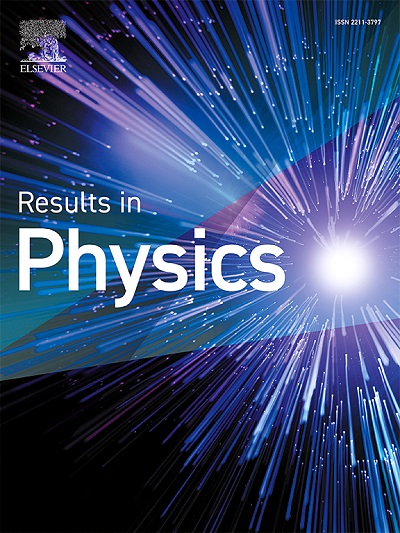Pressure-induced modifications in the electronic, mechanical, optical, and thermodynamic properties of CsPbI3 for advanced optoelectronic applications: A DFT study
IF 4.4
2区 物理与天体物理
Q2 MATERIALS SCIENCE, MULTIDISCIPLINARY
引用次数: 0
Abstract
Halide perovskite-based materials have garnered significant attention in the scientific community due to their diverse optoelectronic and photovoltaic applications. This study employed density functional theory (DFT) to investigate the substantial changes in the physical properties of cubic halide perovskite CsPbI3 under hydrostatic pressures ranging from 0 to 55 GPa. Under high external pressures, CsPbI3 transitions from semiconducting to metallic, with conduction and valence band maxima convergent at 40 and 55 GPa. The intrinsic structure of CsPbI3 exhibits direct band gap tuning at the Γ point, decreasing with pressure and reaching optimal photoelectric efficiency values (1.30–1.40 eV) within the 35–45 GPa range. Bandgap modifications alter state density, impacting conduction and valence band contributions. The mechanical response of CsPbI3 shows its ductile behavior and ability to improve properties under external pressure. Elastic coefficients increase at a maximum pressure value, indicating stiffness and resistance to shear deformation. However, when pressure exceeds 45 GPa, the phenomenon of phase stability sharply breaks down. Furthermore, dynamic dielectric functions are often used to measure the impact of band gap reduction on optical properties and illustrate that the pressure increases lead to a rise in the behavior of static refractive index. The optical absorption peak of CsPbI3 exhibits a redshift with growing pressure, attributed bandgap reduction, and demonstrates enhanced light absorption and conductivity. The thermodynamic analysis examines phonon dispersion, lattice vibrations, and thermal conductivity. The results show structural stability under pressures from 0 to 45 Pa, highlighting CsPbI3’s suitability for heat-dissipating applications. These findings suggest that CsPbI3 has significant potential for advanced optoelectronic applications, particularly in the development of efficient photovoltaic materials that leverage its unique properties under pressure.

求助全文
约1分钟内获得全文
求助全文
来源期刊

Results in Physics
MATERIALS SCIENCE, MULTIDISCIPLINARYPHYSIC-PHYSICS, MULTIDISCIPLINARY
CiteScore
8.70
自引率
9.40%
发文量
754
审稿时长
50 days
期刊介绍:
Results in Physics is an open access journal offering authors the opportunity to publish in all fundamental and interdisciplinary areas of physics, materials science, and applied physics. Papers of a theoretical, computational, and experimental nature are all welcome. Results in Physics accepts papers that are scientifically sound, technically correct and provide valuable new knowledge to the physics community. Topics such as three-dimensional flow and magnetohydrodynamics are not within the scope of Results in Physics.
Results in Physics welcomes three types of papers:
1. Full research papers
2. Microarticles: very short papers, no longer than two pages. They may consist of a single, but well-described piece of information, such as:
- Data and/or a plot plus a description
- Description of a new method or instrumentation
- Negative results
- Concept or design study
3. Letters to the Editor: Letters discussing a recent article published in Results in Physics are welcome. These are objective, constructive, or educational critiques of papers published in Results in Physics. Accepted letters will be sent to the author of the original paper for a response. Each letter and response is published together. Letters should be received within 8 weeks of the article''s publication. They should not exceed 750 words of text and 10 references.
 求助内容:
求助内容: 应助结果提醒方式:
应助结果提醒方式:


